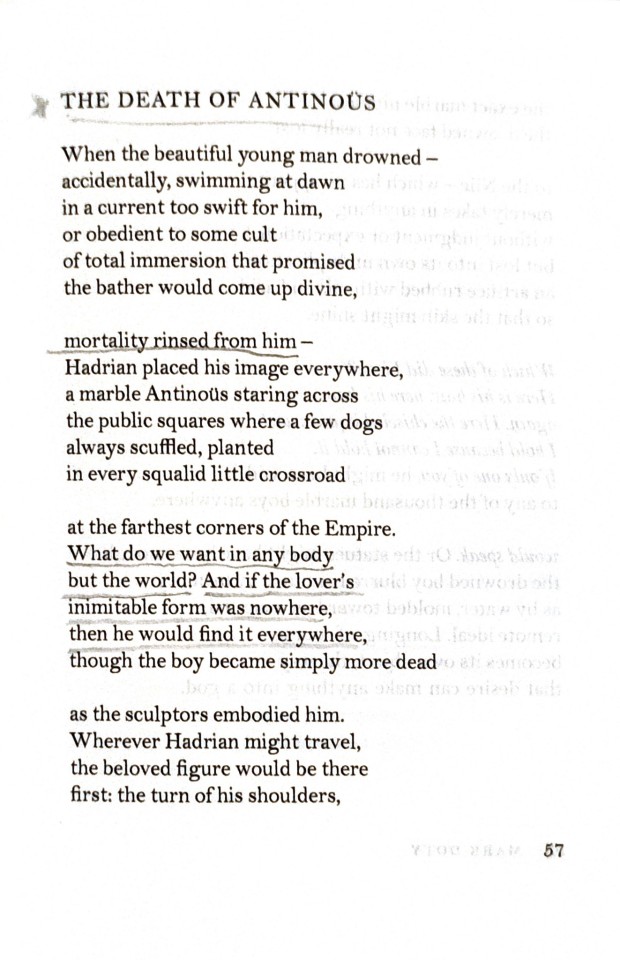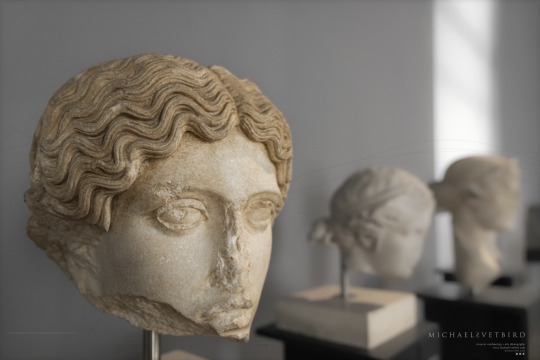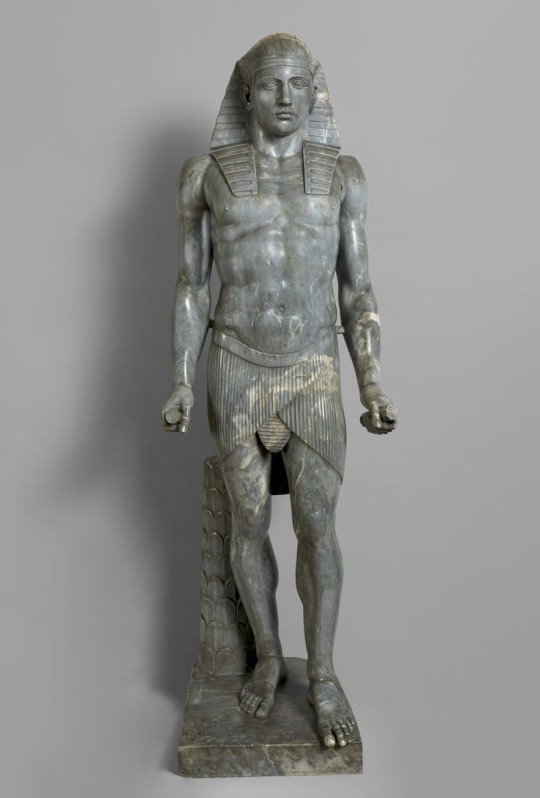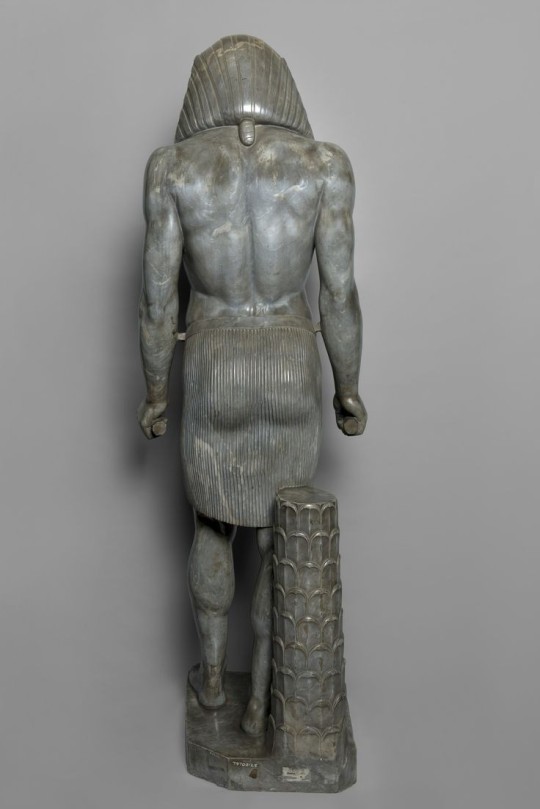#emperor hadrian x antinous
Explore tagged Tumblr posts
Text

Still working on this, have no idea when it’ll be finished so here’s a little update
Also sorry I disappeared, school and traveling have been making drawing rough
#fanart#ancient rome#antinous#hadrian#art#emperor hadrian x antinous#emperor hadrian#the kiss#inspired by klimt#wip
59 notes
·
View notes
Text
They should play Hadrian and Antinous. Yeah, I know that Jeremy looks more like Renaissance twink but THIS CAST IS PERFECT. Sometimes I really appreciate my art history degree...






#the bear#I'm reading fics 24/7 help#notsoromangays#carmy x richie#ebon moss-bachrach#jeremy allen white#emperor hadrian#antinous#grababear
21 notes
·
View notes
Text
I had the great honor recently of seeing the relief that hung in Hadrian's own quarters
and wondered if, in his grief, Hadrian took the outstretched marble hand until it grew warm in his touch and whispered words of love behind marble curls into a delicate hidden ear
And then I wondered if Hadrian licked his nipple.



do yall know about this
#art#antinous#hadrian x antinous#sapphic solidarity with hadrian#best emperor#daddy hadrian#the immortal twink#well... perhaps twunk#the gay god#villa albani antinous
5K notes
·
View notes
Text

Roman Over Life-Size Statue of Antinous, Companion of Emperor Hadrian, as a Hunter 130-138 AD
Nude but for the paludamentun (cloak) over his left shoulder and arm, clasped on his right shoulder. He has the characteristic muscular development of Antinous, his boyish face, and mass of curls bound with a diadem. Limestone. H. 152 x w. 51 x d. 31.5 cm.
Antinous, also called Antinoös, (c. 111 – c. 130) was a Greek youth from Bithynia and a favourite and lover of the Roman emperor Hadrian. Following his premature death before his twentieth birthday, Antinous was deified on Hadrian's orders, being worshipped in both the Greek East and Latin West, sometimes as a god (θεός, theós) and sometimes merely as a hero (ἥρως, hḗrōs).
Little is known of Antinous's life, although it is known that he was born in Claudiopolis (present day Bolu, Turkey), in the Roman province of Bithynia et Pontus. He was probably introduced to Hadrian in 123, before being taken to Italy for a higher education. He had become the favourite of Hadrian by 128, when he was taken on a tour of the Roman Empire as part of Hadrian's personal retinue. Antinous accompanied Hadrian during his attendance of the annual Eleusinian Mysteries in Athens, and was with him when he killed the Marousian lion in Libya, an event highly publicised by the Emperor. In October 130, as they were part of a flotilla going along the Nile, Antinous died amid mysterious circumstances. Various suggestions have been put forward for how he died, ranging from an accidental drowning to an intentional human sacrifice or suicide.
Following his death, Hadrian deified Antinous and founded an organised cult devoted to his worship that spread throughout the Empire. Hadrian founded the city of Antinoöpolis close to Antinous's place of death, which became a cultic centre for the worship of Osiris-Antinous. Hadrian also founded games in commemoration of Antinous to take place in both Antinoöpolis and Athens, with Antinous becoming a symbol of Hadrian's dreams of pan-Hellenism. The worship of Antinous proved to be one of the most enduring and popular of cults of deified humans in the Roman empire, and events continued to be founded in his honour long after Hadrian's death.
#Emperor Hadriian#Roman Over Life-Size Statue of Antinous#limestone#limestone statue#ancient artifacts#archaeology#archeolgst#history#history news#ancient history#ancient culture#ancient civilizations#ancient rome#roman history#roman empire#roman art
95 notes
·
View notes
Text

🪷 Carrara marble plaque of Antinous
Rare, fine quality Grand Tour elongated octaganal Carrara marble bas-relief profile plaque of Antinous, after the antique original, known as the Antinous Vaticano discovered at Hadrian's Villa at Tivoli in 1790 and now on permanent display in the Pio Clementione in the Vatican Museums. Regarded as the most beautiful man in the Roman world Antinous was both the favourite and lover of the Roman Emperor Hadrian. Italian, probably Rome, circa 1880.
H 23cm x W 19cm x D 2.5cm 🪷
8 notes
·
View notes
Text


HEADS | Roman | Palazzo Massimo: 👉 Pic 1. Left to Right:
ANTINOUS [Bithynian favoured by the emperor Hadrian], https://en.wikipedia.org/wiki/Antinous 130-138 AD, Late Hadrianic period, Medium grained white marble [from Villa Adriana, Tivoli, Lazio].
AMAZON [Mattei type], Roman copy of a Greek original by Phidias, Hadrianic period [117-138 AD], Parian marble [from Villa Adriana, Tivoli, 1928].
HYPNOS [a personification of], May derive from a late Hellenistic model of the 2nd-half 2 BC, Hadrianic period [117-138 AD], Fine grained white marble [from Villa Adriana, Tivoli, 1928].
FEMALE DEITY [a separately-made head for a statue], Roman interpretation of a Greek Severe Style models, https://en.wikipedia.org/wiki/Severe_style Hadrianic period [117-138 AD], Pentelic marble [from Villa Adriana, Tivoli, 1892].
FEMALE DEITY [a separately-made head for a statue], "Reminiscent of Greek models of the Attic school ca 460 BC", Hadrianic period [117-138 AD], Fine grained white marble [from Villa Adriana, Tivoli, 1927].
👉 Pic 2. Close-up of the Amazon's Head: "The head belongs to a group of Roman copies of a model generally attributed to Phidias" [Sanctuary of Artemis at Ephesos]: Amazon Mattei type from Cryptoporticus between the Libraries and the Stadium of Villa Adriana in Tivoli [Lazio], https://villae.cultura.gov.it/en Found in 1928, Hadrianic period [117-138 AD], Parian marble [Txt ©MNR PM].
Palazzo Massimo, Museo Nazionale Romano | MNR PM [First Floor, Sala VI.] • Web : https://museonazionaleromano.beniculturali.it/en/palazzo-massimo • FB : https://www.facebook.com/MNRomano • IG : @museonazionaleromano • X : @MNR_museo
MNR PM | Michael Svetbird phs©msp | 06|23 6300X4200 600 [I., II.] The photographed objects are collection items of MNR PM, photos are subject to copyrights. [non commercial use | sorry for the watermarks]
📸 Part of the "HEADS.Sculpture" MSP Online Photo-gallery:
👉 D-ART: https://www.deviantart.com/svetbird1234/gallery/78520831/heads-sculpture
👉 FB Album: https://www.facebook.com/media/set?set=a.1400262423675664&type=3
#rome#ancient rome#palazzo massimo#museo nazionale romano#villa adriana#hadrian's villa#tivoli#ancient sculpture#sculpture#antiquity#ancient#archaeology#museum#mythology#greek mythology#art history#antiquities#ancient world#hadrian#heritage#goddess#deity#amazon#heads#photo gallery#art photography#archaeology photography#sculpture photography#museum photography#michaelsvetbird
1 note
·
View note
Photo

i am narcissist enough to do edits about my own fanfiction (obviously cherik fanfiction) The Passerby - "(...) mourned are the absent lips of all the beautiful passersby we didn’t manage to not let go."
Erik flees from himself for too long, to the extent that he decides to travel to Rome. There, he falls in love - even if for a very short amount of time. He realizes that sometimes you look for something your whole life just to lose it very very easily.
In which there are references to Italian culture in general (singers, writers) and to Ancient Rome gayness. No Warnings to be underlined! If not a n g s t.
- word count: 3271
- chapers: 1/1
( btw for this edit i used an amazing psd by @ierocaine that i downloaded from their deviantart and an aesthetic template, but I couldn’t find the source, so if someone knows it hit me up and I’ll credit the artist!! )
#erik lensherr#charles xavier#the passerby#de andré#x men#marvel#magneto#professor x#antinous#rome#emperor hadrian#my edit#my writing#comics#cherik
31 notes
·
View notes
Link
Chapters: 9/9 Fandom: Hannibal (TV), Hannibal Lecter Series - All Media Types Rating: Explicit Warnings: Graphic Depictions Of Violence Relationships: Will Graham/Hannibal Lecter, Will Graham & Hannibal Lecter, Molly Graham/Will Graham, Molly Graham & Will Graham, Antinous/Emperor Hadrian Characters: Hannibal Lecter, Will Graham, Barney Matthews, Molly Graham, Walter Graham, Chiyoh (Hannibal), Jack Crawford, Alana Bloom, Bedelia Du Maurier, Will Graham's Dogs, Clarice Starling, Multiple Miggs, Emperor Hadrian, Antinous (c. 111-130 CE), Original Characters Additional Tags: time did reverse… or did it?, Inception meets Angel Heart (kind of), with a heavy dose of hellinism, pining murder husbands, apex assholes, the space-time continuum is overrated, will graham makes questionable choices, even murderrific-er, don't piss off the mob, international adventures, multiversal mindfuckery, Poetry nerd!Will, lovesick cannibaes, these murder husbands are going to kill me, crescent city love, dat ass x 2, they flip (thank u bryan), no one is drunk enough for this shit, except maybe will, Murder Tableaus, Hurt/Comfort, Angst, Smut, Slow Burn, Post-Episode: s03e13 The Wrath of the Lamb, Post-Season/Series 03 Series: Part 3 of A Thousand Savage Futures Summary:
A different kind of post-S3 story, wherein Hannibal and Will are thrown back into their respective pre-fall nightmares through chance and circumstance. A little bit Inception meets Angel Heart.
Severely injured and once again a resident of the BSHCI, Hannibal believes his worst fear has come true. Will, back home with Molly and Walt, finds himself torn in more directions than his loosening grip on reality can accommodate.
As their lives begin to unravel and the lines between memory, dream, and reality start to blur, both men must face the inevitable pull of their connection. Will they survive separation in this world—in any world? Or are they destined to be forever conjoined?
1 note
·
View note
Text

Dumb lil sketches of Antinous
126 notes
·
View notes
Note
a moment for me to scream at “placed together and remembered for their love for almost 2000 years”.
Okay done now.
Another day another Merlin x Arthur reincarnation.
I’m actually losing my mind at the similarities they have with Merlin and Arthur. Hadrian literally turned antinous into a god. He created a cult for him and it was really popular. Even got to the west where antinous was worshiped as a Celtic god. Hadrian literally made an Egyptian priest deify him. He built statuses and an named an entire CITY after antinous. I’m
I can’t find much about antinous’ childhood, but they think he was sent to Rome to work as a page/servant to the emperor before he became his favourite. They say it was antinous’ wisdom that mad Hadrian notice him at first.
Also from what I can read, they were together EVERYWHERE. On every tour and every visit to every country, they went together.
Wikipedia puts the entry “antinous” under Hadrian’s religious activities sgshdhdgehsgeveveve
Also this from Wikipedia: “during their relationship, there’s no evidence that antinous ever used his influence over Hadrian for political or personal gain.”
At this point I’m 90% sure bbc took inspiration from them to write Merlin and Arthur’s relationship lmao

Hi thought some parallels would make you want to put your head through a wall with me :)
I’m. screaming. HOW HAVE I NOT HEARD OF THEM BEFORE?
“underwent a period of intense grieving” I WANNA CRY AAAAAAAAAAAAAAAAAAAAAAAAAAAAAAAAAAAAAAAAAAA
one lover dies while their other half destroys themselves with grief. Now who could that be?
anyway
look at these two parallels too : (source)
1) Over the next three years, a relationship formed between Antinous and Hadrian. Antinous became the emperor’s “personal favorite” and was seen in Hadrian’s company more than his wife.
2) Six years later, 136 CE, Hadrian adopted Lucius Ceionius Commodus and made him his heir (as Hadrian and his wife never had kids.)
I’m -
actually speechless. like what? ohmygod? I NEED ANSWERS BBC
WTF
also from the same site : “I’m not saying Hadrian set the bar too high for the rest of us, but would your lover declare you a god after you died in a river under suspicious circumstances — making you a relevant historical figure for thousands of years to come?”
:D :D :D
104 notes
·
View notes
Text

WIP of Hadrian/Antinous as Klimt's "the kiss"
#hadrian#antinous#ancient rome#fanart#emperor hadrian x antinous#the kiss#inspired by klimt#hands are hard#antinous my love
48 notes
·
View notes
Text

Small and quick WIP of Hadrian and Antinous in the modern day
#hadrian#emperor hadrian x antinous#emperor hadrian#Antinous#Fanart#Modern AU#WIP#ancient history#Ancient Rome#Ancient Greece
52 notes
·
View notes
Text

....and they were boys....and they kissed
another little quick modern Hadrian x Antinous
#antinous#emperor hadrian x antinous#emperor hadrian#hadrian#ancient rome#gay#and they were boys#modern AU#fanart#art
40 notes
·
View notes
Text





#Repost @mattiello_real
"Antinous", the story of an eternal smile that has spanned the course of the centuries, fascinating writers, poets and artists from time to time that Antinous himself have considered as the image that most embodies the absolute idea of eternal beauty.
.
Neoclassical bust in bronze (36 x 38 cm)
which portrays Antinous, (27 November 110 or 111 - Egypt, 30 October 130) a young Greek known for the sentimental and amorous relationship he had with the Roman emperor Hadrian, who divinized him after his premature death in rather mysterious circumstances.
.
In his memory Hadrian founded cities, such as Antinopoli in Egypt, temples like the one in Villa Adriana or in Delphi in Greece, he ordered statues and busts that portrayed that beautiful and melancholy young man, like the gaze of the old emperor. It made him God, almost a sad Apollo entering Roman civilization.
.
In line with the homoerotic customs of the Greek world to which the emperor inspired his private conduct, Adriano passionately loved Antinous, no less for his qualities of character than for his extraordinary beauty.
.
"In Rome, when they see someone looking serious and without a beard he is a consul; when he has a long beard he is a philosopher; and if he is a boy he is an Antinous"
Montesquieu - "Voyage d'Italie" 1728.
.
"Little soul, tender and floating soul, companion of my body, which was your abode, you set out to descend into those pale, hard and naked places, where you will have to give up the games of Adriano and of the past. One more moment, let's look still together the familiar shores, the objects that no doubt we will never see again. Let's try to enter death with open eyes "
Marguerite Yourcenar - Memoirs of Hadrian
10 notes
·
View notes
Text

🪷Antinous: Festival of the Red Lotus
In August 22, the modern cult of Antinous celebrates the Festival of the Red Lotus, which is said to have sprung from the blood of the Marousian Lion hunted by Antinous and Hadrian.
The white and blue flowers native to Egypt and described as “lotus” in ancient Egyptian mythology and art are actually water lilies, members of the genus Nymphaea. Blooms of the blue Egyptian water lily Nymphaea caerulea open and close during daylight hours; the white Egyptian water lily Nymphaea lotus opens at dusk and closes in the mid-morning. Folk tales describe the flowers as rising from the water at dawn or dusk each day, but rather the buds form underwater and emerge above the water as the stems lengthen, open and close each day during the few days of bloom, and then sink beneath the water after the period of bloom is finished. The sinking below and rising above the water links the “lotus” with the mythology of rebirth.
The red Egyptian lotus Nelumbo nucifera is a member of the family Nelumbonaceae. Native to India, East Asia, and Southeast Asia. It seems to have been brought to Egypt in the Late Period, in the 6th or 7th centuries BCE. Its appearance is very different to the blue and white lilies, with rounded petals rising well above the water.
It is this flower which legend associates with Antinous. A poem from the reign of Diocletian (284 – 305 CE) links the Lion Hunt with the lotus:
The nymphs began to crown their tresses
With the flower named after Antinous,
Which to this day preserves
The mighty spear of the hunter.
Into the Nile he hurried for purification
Of the blood of the lion…
– Payprus Oxy. 63.4352 (X)
Another text from the 3rd century CE specifically mentions the color of the lotus of Antinous:
But since I have mentioned Alexandria, I know that in that beautiful city there is a garland called the garland of Antinous, which is made of the lotus, which grows in those parts. And this lotus grows in the marshes in the summer season; and it bears flowers of two colours; one like that of the rose, and it is the garlands woven of the flower of this colour which are properly called the garlands of Antinous; but the other kind is called the lotus garland, being of a dark colour. And a man of the name of Pancrates, a native poet, with whom we ourselves were acquainted, made a great parade of showing a rose-coloured lotus to [H]adrian the emperor, when he was staying at Alexandria, saying, that [p. 1082] he ought to give this flower the name of the Flower of Antinous, as having sprung from the ground where it drank in the blood of the Mauritanian lion, which Hadrian killed when he was out hunting in that part of Africa, near Alexandria; a monstrous beast which had ravaged all Libya for a long time, so as to make a very great part of the district desolate.
– Athenaeus. The Deipnosophists. Or Banquet Of The Learned Of Athenaeus. London. Henry G. Bohn, York Street, Covent Garden. 1854. (X)
Ave, ave Antinoe! The red lotus reminds us of your courage. May we, too, rise after the struggles of life, and join you in the company of the immortals!
"honorthegodsblog" 🪷
🪷🪷🪷🪷🪷🪷🪷🪷🪷🪷🪷🪷
2 notes
·
View notes
Text


Antinous
Artist: ANONYMOUS, AFTER THE ANTIQUE
Antinous 1800c. 1806
Marble | 171.0 x 56.5 x 49.0 cm (whole object) | RCIN 41036
Description
A full-length grey marble statue of Antinous, standing, looking straight ahead, in ancient Egyptian dress and headdress, his left leg forward, a palm tree stump behind his right leg; carrying bars in both hands.
Antinous was the lover and companion of the Roman emperor Hadrian. Hadrian regularly toured the Roman Empire, and probably first encountered Antinous during a visit to Bithynia in 123 AD. Hadrian installed Antinous in the Imperial Court, providing him with education and status. Though Hadrian was married, his relationship with Antinous was in keeping with Hellenic conventions that saw older men free to pursue consensual relationships with teenage men.
The statue's Egyptian trappings refer to his death by drowning in the Nile. It is a copy of an ancient statue excavated at Hadrian's villa at Tivoli during the sixteenth century, which has been displayed in the Vatican museums since the late eighteenth century. At that time it proved widely popular among neo-classical artists, and numerous copies were made.
This example was probably made in France in the early years of the nineteenth century. It may have been commissioned by Napoleon Bonaparte as a gift to his brother Joseph, King of Naples. In 1806 it was seized from a French vessel while en route to Naples, by the British naval frigate Imperieuse. Sold at Gibraltar, it entered the possession of Mr George Ward of Northwood, Cowes, Isle of Wight.
At the sale of Northwood in 1850 it was purchased, as an antiquity, by Queen Victoria for Osborne.
0 notes